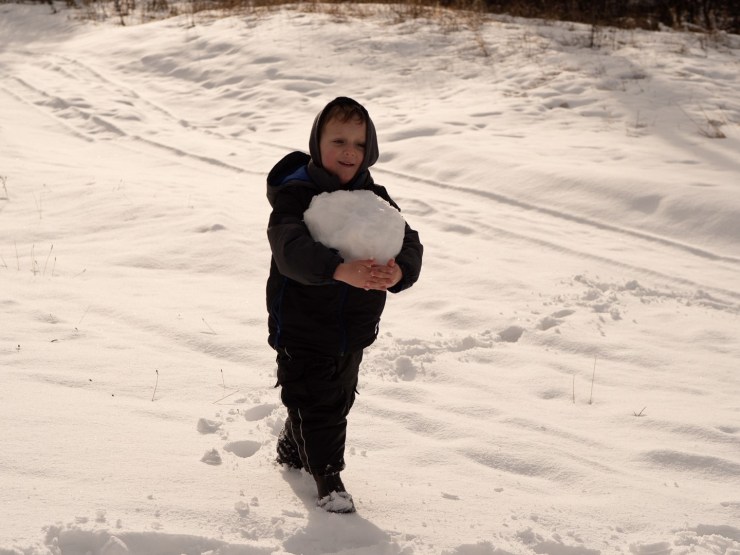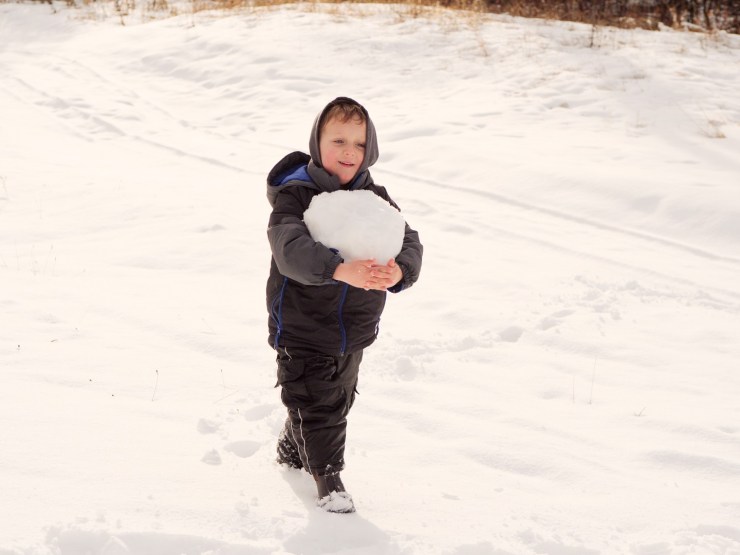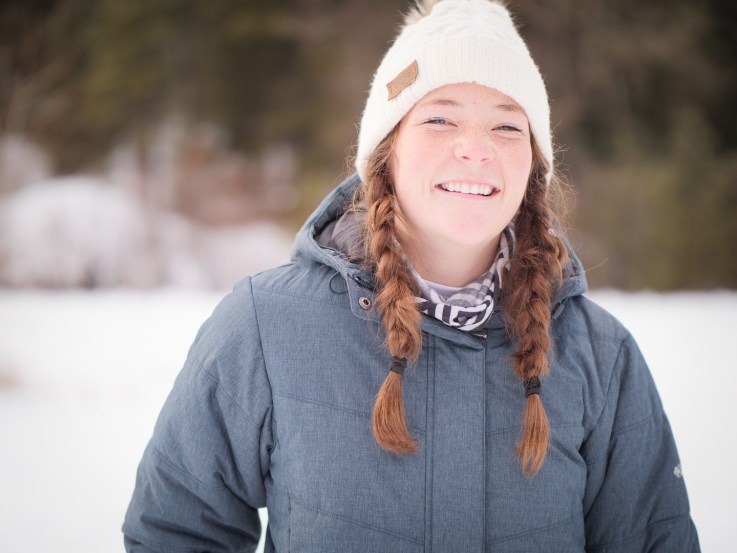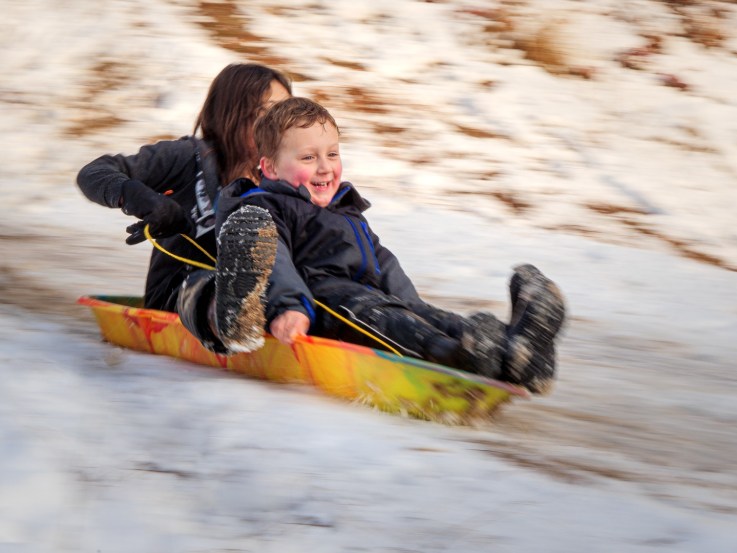When people play in the snow they always have fun. It often ends in tears, but there’s always a lot of fun along the way, which means it’s a great time to make pictures. But photographing people in the snow has a couple of unique challenges that this article will help you with.
Blinkin’ White
The trouble with snow is simply that it’s white. Ice white. Blizzard white. All those other whites that are options when you buy poster board, all exist at the same time on a field of snow.
The problem is that your camera has been taught that a world covered in snow is not normal. It’s been taught that the world should be 18% gray, which is about the tone of a green lawn on a sunny day. Anything darker than that or brighter than that makes your camera think the exposure is wrong.
In fact, your camera has a function called Highlight Warning (or something similar) that warns you when the picture is too bright. Playback the picture and if something is totally white, it puts a blinking black thing on the area that’s too white. We call those “Blinkies.”
Ignore the light meter
If you pay attention to the light meter at the bottom of your viewfinder, you’ll make a picture that’s too dark. Using Aperture Priority or Shutter Speed Priority modes, you need to tell your camera to make the picture brighter by one to two full stops — that’s three to six tick marks on the light meter. Check out this example.
.mgl-tiles { display: none; } #mgl-gallery-63739a7575b0f { margin: -5px; width: calc(100% + 10px); } #mgl-gallery-63739a7575b0f .mgl-box { padding: 5px; } @media screen and (max-width: 768px) { #mgl-gallery-63739a7575b0f { margin: -5px; width: calc(100% + 10px); } #mgl-gallery-63739a7575b0f .mgl-box { padding: 5px; } } @media screen and (max-width: 460px) { #mgl-gallery-63739a7575b0f { margin: -5px; width: calc(100% + 10px); } #mgl-gallery-63739a7575b0f .mgl-box { padding: 5px; } }
Aperture Priority, exposure compensation set to 0.0.
Aperture Priority, exposure compensation set to +1.7.
On the left is the camera’s automatic exposure. On the right is the result with the exposure compensation set to +1.7, which makes the right exposure even though the snow might be totally blown out.
Exposure compensation is the +/- button on your camera. It allows you to compensate for difficult situations. Turn it up when making pictures in the snow.
Mind the white balance
The other issue you might run into is color. On a sunny day, the sun is a very different color from the blue sky. But the blue sky is actually lighting anything not facing directly toward the sun, which means blue light. If your subject is looking into the sun, using Daylight white balance is fine. But if the sun is behind them, then you need to set the white balance to Shade.
This is another situation where the camera’s automatic setting is not appropriate. If your subject is facing away from the sun, the camera still sees all the white of the snow that is sunlit and will likely choose something closer to daylight. But the blue sky is lighting the face. You have to override the auto.

In this shot, the sun is behind her, so she’s lit more by the blue sky above. I chose Shade for the white balance to maintain good skin tones that look like a healthy person instead of a smurf.

Same thing here. The sun is lighting the snow in the background, but the end of the sledding run is already in the shade. Using Shade white balance makes the sunny area a little orange, but it keeps the kids looking great which is the most important thing.
Sledding photography tips
What’s that? You’d like more tips on making sledding pictures? Here’s a full how-to article.
Go play!
It’s fun to play in the snow, and if you make the pictures brighter and choose the right white balance, you’ll have a fun time making pictures in the snow, too.
Merry Christmas!
Portrait Tips come out each week, and you can see them all right here.
Tell your story with the second annual Visual Storytelling Conference!
Experience four days of interactive, online training sessions featuring a range of educational content with experienced photographers and content creators. This free event kicks off with a series of technical boot camps to build essential skills, followed by live, online sessions on photography, video, business and social media. Join live from March 10-13, 2022!
